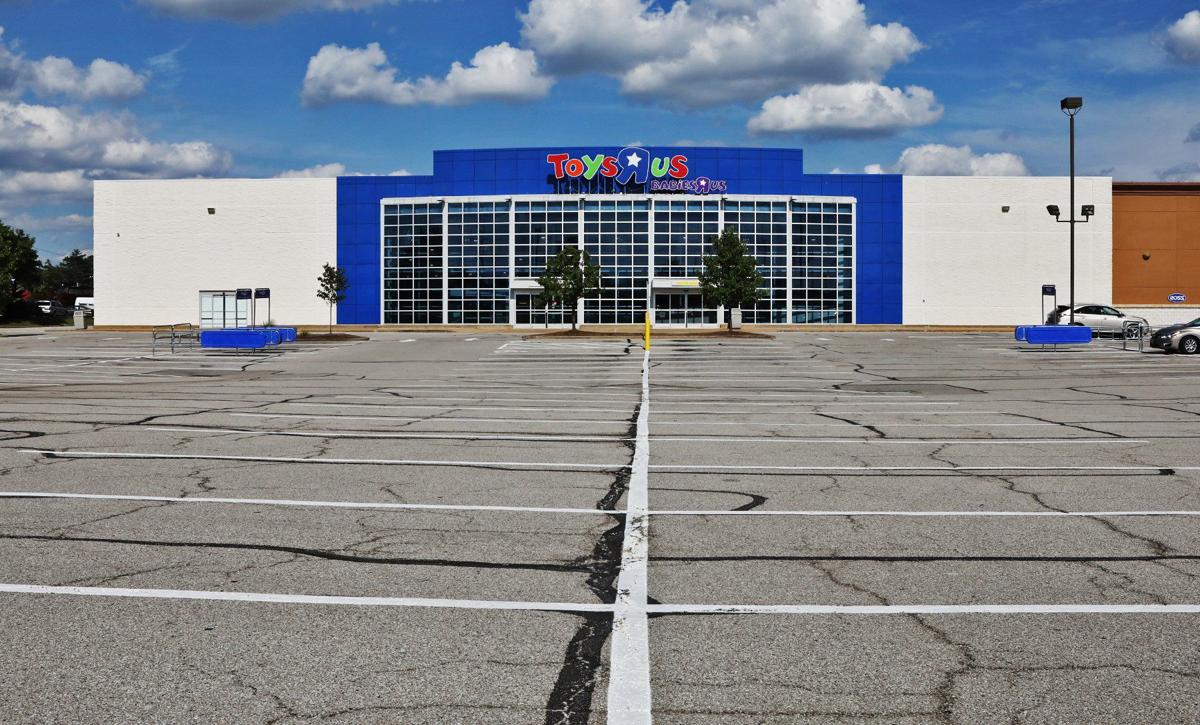A former Toys R Us store at the corner of Watson Road and Lindbergh Boulevard in Sunset Hills has been empty since the end of June, leaving behind a 48,200-square-foot vacancy in that area that will undoubtedly lead to lost sales tax revenue heading into the most active part of the year for shopping.
If not for a neighboring business, and a small clause in its lease, that storefront might have been filled weeks ago.
After Toys R Us closed for good after its bankruptcy and liquidation, at least four viable users came forward with interest in leasing the space. Among them were two fitness chains and two childrenŌĆÖs entertainment concepts, said Mark Kornfeld, managing director of retail services at Sansone Group, which markets the shopping plaza on behalf of the plazaŌĆÖs landlord.
A deal with any of those prospective tenants failed to materialize because Ross Dress for Less, the off-price department store that has one of its 14 ūŅą┬ąė░╔įŁ┤┤ area stores just next door to the old Toys R Us store, was unwilling to waive part of its lease that prohibited such concepts from moving in without getting back an undisclosed amount of money or reduced rent.
People are also reading…
That made it cost-prohibitive for the landlord to ink a deal with one of the gyms or childrenŌĆÖs entertainment concepts.
Such use clauses, which are prevalent in retail leases across the metro area, are making it hard for real estate officials to backfill hundreds of thousands of square feet in retail space left empty by the likes of Toys R Us, Babies R Us and Sports Authority, and moving forward Shop ŌĆÖn Save, which appears ready to shutter more than a dozen area stores by mid-November.
In todayŌĆÖs retail landscape, tenants that are growing with locations in shopping centers include off-price retailers, fitness concepts and gyms, childrenŌĆÖs entertainment concepts, furniture stores and quick-service restaurants, said Matt Kopsky, an analyst with Edward Jones who focuses on real estate investment trusts in the retail sector.
A decade or more ago, when many of todayŌĆÖs leases were initially signed, those concepts were deemed risks for traditional retailers.
ŌĆ£Everybody viewed the fitness industry and the entertainment industry as bad things because we didnŌĆÖt want people parking cars there for two hours and not leaving and clogging up the parking lots,ŌĆØ Kornfeld said. ŌĆ£Now itŌĆÖs the complete opposite, with retailers loving entertainment uses because it gets people in the parking lot.ŌĆØ
Still, use clauses have given tenants all the leverage.
ŌĆ£Tenants are in the position of power because they donŌĆÖt just let them move in,ŌĆØ Kornfeld said. ŌĆ£They are looking for cash, reduced rent or more term on their lease. It becomes a full-on negotiation where they can ask for whatever they feel like. Some retailers flat out just wonŌĆÖt work with you because in some leases, if an anchor tenant like Toys R Us closes, some tenants have occupancy clauses that if it goes below a certain level, it automatically inserts reduced rental rates until that spot is filled.ŌĆØ
Kornfeld said he had run into similar situations trying to backfill spaces in strip malls in Mehlville, Fenton and other areas of ūŅą┬ąė░╔įŁ┤┤.
In some cases, neighboring tenants agree to the waiver.
Kornfeld said that in order to secure a Life Time Fitness as part of an $80 million mixed-use development on the site of the old Shriners Hospital in Frontenac, he had to get permission from some nearby tenants .
ŌĆ£They were very willing to grant that to allow the fitness use because they knew it could bring 50,000 to 60,000 new members coming in and out of the parking lot on a daily basis, with some of them staying and shopping,ŌĆØ he said.
Use or occupancy clauses could limit what real estate officials can do with the glut of retail space that will be on the market.
Vacancy rates in ūŅą┬ąė░╔įŁ┤┤ŌĆÖ retail sector have slowly improved over the last few years, with roughly 4.9 percent of the regionŌĆÖs 162 million square feet of store space unoccupied, according to research from Newmark Grubb Zimmer. However, big box stores have fared worse, with a 5.4 percent vacancy rate, which equates to nearly 129.5 million square feet of retail space that is in search of a tenant.
Adding to the equation is the fact that many big box retailers, such as Target or Bed, Bath & Beyond, are looking to move into smaller storefronts, Kopsky said. The number of growing tenants looking to move into spaces 40,000 square feet and up are few and far between, he said.











